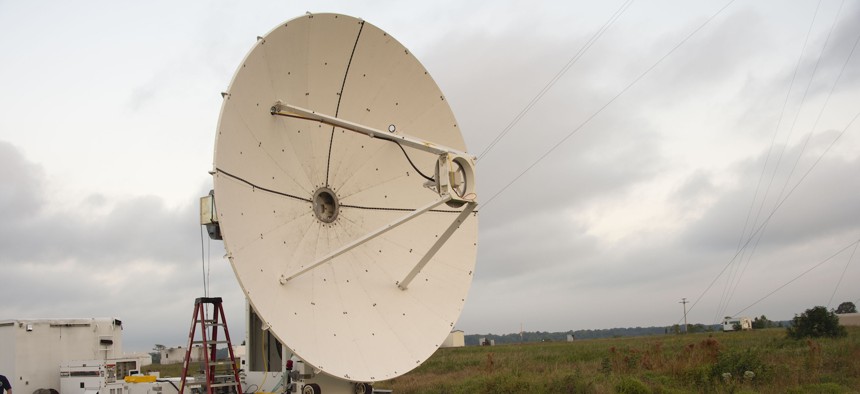
A microwave dish transmitter is pointed toward a rectifying antenna in part of the Safe and Continuous Power Beaming – Microwave (SCOPE-M) demonstration at Army Blossom Point Research Field, Maryland, Sept. 21, 2021 U.S. Naval Research Laboratory
High-Powered microwave weapon may have just passed a critical test
RTX’s CHIMERA shows it can track and attack targets at "tactically relevant ranges"
The long-envisioned idea of using directed energy for air defense may have just crossed an important threshold.
In a three-week series of tests run with the Air Force Research Lab, the experimental CHIMERA microwave managed to track and keep a high-powered beam on a variety of static and aerial targets, RTX announced on Monday.
That’s an important step toward a point-defense weapon that can do useful damage to an incoming missile or its electronics, said Paul Head at Raytheon.
“We've been developing to get to tactically relevant ranges such that you can have enough time to affect those threats coming in, and then have time to assess what you've done with those threats and give your warfighters time so that if they have to” chose an alternative course of action,” Head said in an interview.
Here’s why that matters: downing drones with missiles is an expensive proposition. Over the past few months in the Red Sea, for example, the U.S. Navy has been using multi-million-dollar Standard Missile-2s to down Iranian-supplied drones that can cost as little as $2,000.
The cost differential is why the U.S. military has been developing and experimenting with directed-energy technologies to take down drones for more than a decade. There is also jamming or hacking the drones but, more and more, modern drones don’t require any input from the operator once they’ve been given a target so there is no signal between the operator and the drone to jam.
Lasers face two big challenges: despite years of research they still aren’t at adequate power levels to be effective against particularly fast-moving drones. Additionally, because the beam is very precise, they are less useful against large numbers of drones, of the sort that various Iran-backed groups have been firing against U.S. forces and other targets in the Middle East.
Microwaves face a similar obstacle in terms of power, Head said.
“As you do emit microwave energy, the energy falloff is one over the range, squared. So you're always fighting that number,” he said.
That fact has limited the use of high-powered microwaves in the military to things like stopping a group of people on foot from charging a security gate.
When Defense One asked if the weapon was effective against the Iranian Shahed-136 drones, Head answered, “All I can say is I'm sure that there's a lot of folks out there that wish they had something like this to work against something like that.”
Raytheon plans to deliver two new prototypes, one this year and another in 2026.


